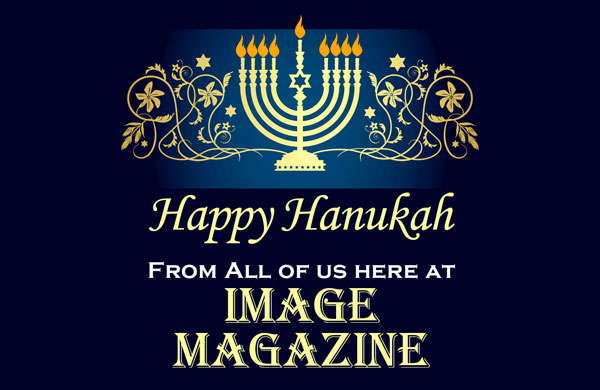
Yom HaShoah was established in 1951 by the Prime Minister of Israel David Ben-Gurion and the President of Israel Yitzhak Ben-Zvi. The original proposal was to hold Yom Hashoah on the 14th of Nisan, the anniversary of the Warsaw Ghetto uprising, but this was problematic because the 14th of Nisan is the day immediately before Passover. So, the date was moved to the 27th of Nisan, which is eight days before Yom Ha’atzmaut, or Israeli Independence Day. Yom HaShoah is also known as Holocaust Remembrance Day, when we remember the six million Jews that perished in the Holocaust.
There are many things to remember on Yom HaShoah, one of which is Kristallnacht, the evening of November 9-10, 1938, when Nazis terrorized Jews throughout Germany and Austria. Thirty thousand Jews were arrested and sent to concentration camps; 91 were killed. Thousands of Jewish shops, businesses and homes were looted and pillaged and over 1,000 synagogues were destroyed. This night came to be known as Kristallnacht, which means Night of Broken Glass, due to all the broken glass from the looting.
Kristallnacht took place after five years of increasing assaults on Jews, their property and their rights by the the Nazis in order to segregate German Jews from the general public and encourage their emigration.

In addition to Kristallnacht, we should remember The Warsaw Uprising. From August 1 through October 2, 1942, nearly 300,000 Jews were transported from the Warsaw Ghetto to the Treblinka death camp. In September after all were transported, nearly 56,000 Jews were left in Warsaw. As reports of the mass murders in the death camps leaked back to the ghettos, despair gave way to a determination to resist.
At that time, the Zydowska Organizacja Bojowa (Z.O.B.) was formed and slowly moved to take control of the ghetto. The Z.O.B. was comprised of mostly young Jews in their teens and early 20s. On January 9, 1943, Himmler visited the Warsaw Ghetto and ordered the deportation of another 8,000 Jews. This deportation order caught many Jews by surprise and for many signaled the beginning of the end. Z.O.B. leader, Mordechai Anielewicz, who was jut 23 years old, ordered a proclamation to the remaining ghetto inhabitants to resist going to the rail station for deportation. In January 1943, the German troops entered the Warsaw Ghetto to begin rounding up Jews for deportation.

With some homemade weapons, the Z.O.B. sprang into action. Using guerilla tactics, the resistance fighters quickly attacked the Germans. After the attack, the Germans became much more alert and after a few days backed away. This withdrawal of the Germans was taken as a victory, but the remaining Jews realized that the Germans would be back. So the Z.O.B. prepared hideouts and readied themselves for the next battle.
The Germans returned and attacked the ghetto, cutting off water, gas and electrical power. Because of the fierce resistance of the Jewish fighters, the Germans eventually burned the entire ghetto. The Warsaw Uprising came to an end on May 16, 1943. Of the more than 56,000 Jews captured, 7,000 were shot and the remainder were transported to concentration camps.
In addition to these events we should remember all of our fellow Jews who died in concentration camps. The first concentration camp established as an execution camp came into existence on December 8, 1941 in Chelmno (Kulmhof), Poland. Nearly 320,000 people were murdered there. The following year, the Nazis started to build three more extermination camps—Belzec, Sobibor and Treblinka, where about 1.7 million Jews were murdered.
The most well-known of the extermination camps was Auschwitz, where more than a million Jews were murdered.
Holocaust Remembrance Day begins at sunset on the 27th of Nisan and ends the following evening. It is usually observed with candle lighting and reciting Kaddish—the prayer for the departed. Often, six candles are lit to represent the six million.
Holocaust survivors speak about their experiences. Some ceremonies have people read from the Book of Names in an effort to remember those that died and to give an understanding of the huge number of victims.
At 10 am on Yom HaShoah, throughout Israel, air-raid sirens are sounded for two minutes. During this time, people stop what they are doing and stand at attention; cars stop, even on the highways; and the whole country comes to a standstill as people pay silent tribute to the dead. On the eve of Yom HaShoah and the day itself, places of public entertainment are closed by law. Israeli television airs Holocaust documentaries and Holocaust-related talk shows, and low-key songs are played on the radio.
Also during this day, tens of thousands of Israeli high-school students, and thousands of Jews from around the world, hold a memorial service in Auschwitz, in what has become known as The March of the Living, in defiance of the Holocaust death marches. This event is considered an important part of the school curriculum—a culmination of several months of studies on World War II and the Holocaust.
A question many ask is: could a Holocaust happen again? Could such evil be allowed to continue unfettered in our democratic society? We may not know the answer, but there is something we do know: we cannot feel too comfortable with our status. While we might live in a democratic society now, and a holocaust seems highly unlikely, who knows what is going to happen? We don’t, and therefore we must be alert and prepared.
When we do find ourselves in pain and persecuted, we may wonder if G-d has forgotten us. We may wonder whether there is a G-d, and whether salvation will ever come. As Jews, we must believe that salvation will come. The nation of Israel has survived persecution time and time again. So much blood and so many tears have been shed. At times, it appears that our end is near. However, we have to remember that although we may not understand the reason for what is happening or what has happened, we know that we will be saved and our persecutors will be punished.
Hopefully we will soon see the construction of the Third Temple. Hopefully we will never again have to suffer the pain that our descendants did. However, until that time comes, we must never forget the lessons that have allowed the nation of Israel to survive until this very day.


